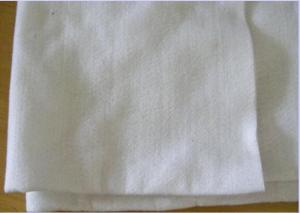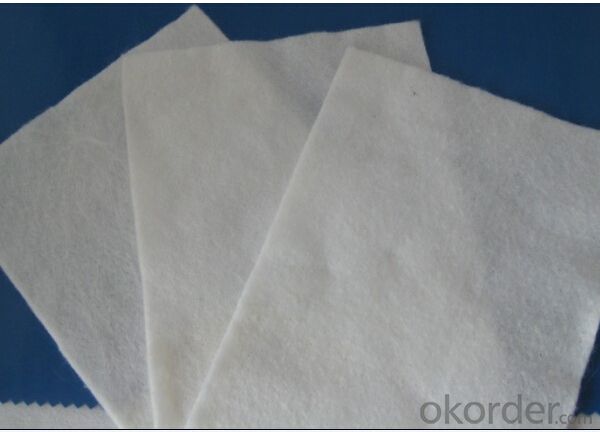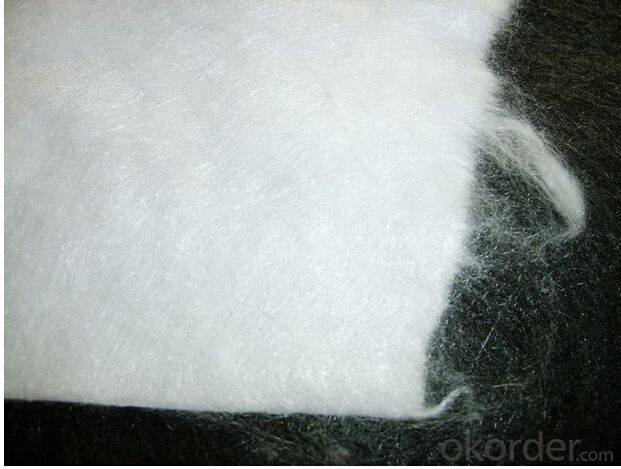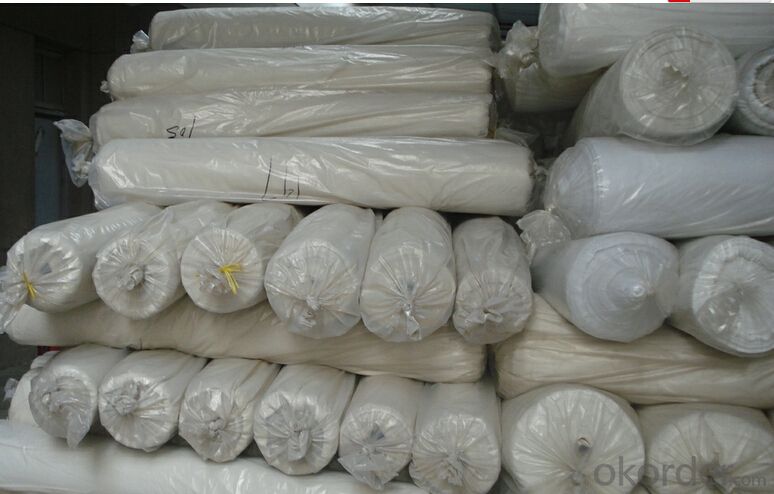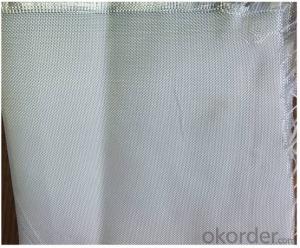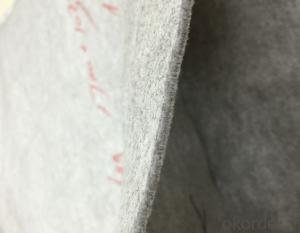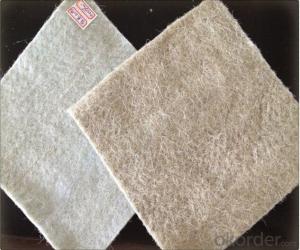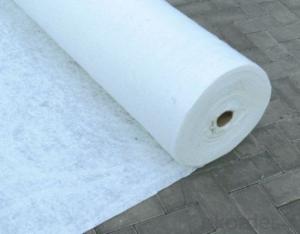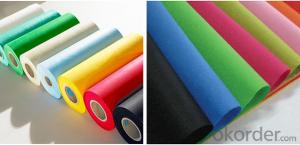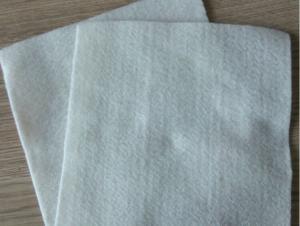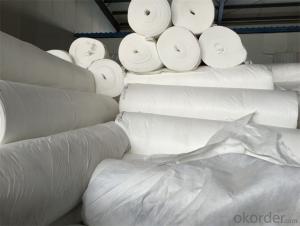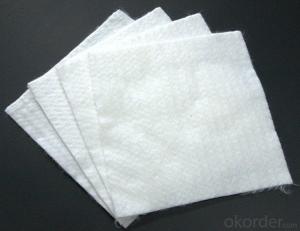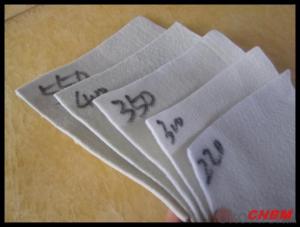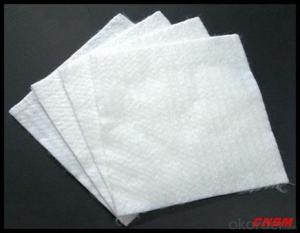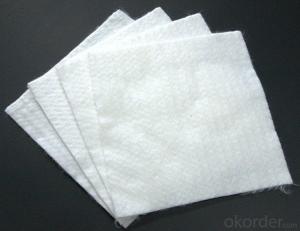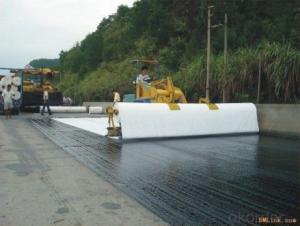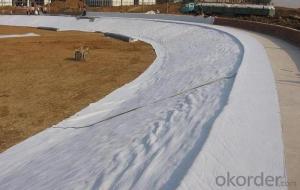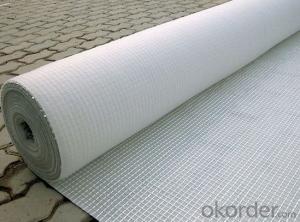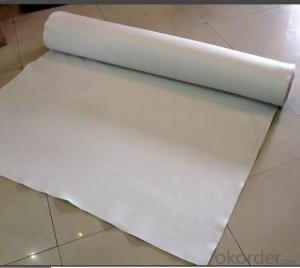Manta Geotextil Para Techos - 100g-1000g Continuous Polyester Filament Spunbond Nonwoven Geotextile
- Loading Port:
- Qingdao
- Payment Terms:
- TT or LC
- Min Order Qty:
- 5000 m²
- Supply Capability:
- 300000 m²/month
OKorder Service Pledge
OKorder Financial Service
You Might Also Like
100g-1000g Continuous Polyester Filament Spunbond Needle Punched Nonwoven Geotextile
1.Product Specification for 100g-1000g Continuous Polyester Filament Spunbond Needle Punched Nonwoven Geotextile
Geotextile type: non-woven
Weight: 100gsm-1000gsm
Width: 1.0m-7.0m
Length: 50m-100m or as request
Color: White, black or as request
Certificates: ISO9001, ASTM, CE, SGS
2.Technical Sheet for 100g-1000g Continuous Polyester Filament Spunbond Needle Punched Nonwoven Geotextile
Item | Value | ||||||||||||||||||||
Nominal Breaking strength | 4.5 | 7.5 | 10 | 15 | 20 | 25 | 30 | 40 | 50 | ||||||||||||
1 | Breaking strength (MD/CD)/(KN/m) | 4.5 | 7.5 | 10 | 15 | 20 | 25 | 30 | 40 | 50 | |||||||||||
2 | Elongation at Break (MDD/CD) /% | 40~80 | |||||||||||||||||||
3 | CBR Mullen Burst Strength/KN | 0.8 | 1.6 | 1.9 | 2.9 | 3.9 | 5.3 | 6.4 | 7.9 | 8.5 | |||||||||||
4 | Tear strength/KN | 0.14 | 0.21 | 0.28 | 0.42 | 0.56 | 0.70 | 0.82 | 1.10 | 1.25 | |||||||||||
5 | Sieve Size O90/mm | 0.05~0.20 | |||||||||||||||||||
6 | Vertical Permeability Coefficient cm/s | K*(10-1~10-3) Among K=1.0-9.9 | |||||||||||||||||||
7 | Thickness /mm | 0.8 | 1.2 | 1.6 | 2.2 | 2.8 | 3.4 | 4.2 | 5.5 | 6.8 | |||||||||||
8 | Width Variation % | -0.5 | |||||||||||||||||||
9 | Weight Variation % | -5 | |||||||||||||||||||
3.Application for 100g-1000g Continuous Polyester Filament Spunbond Needle Punched Nonwoven Geotextile
1,Filter of embankment and slope protection of water conservancy projects, channel isolation, seepage control.
2,Isolate the basis of highway, railway, airport runway, filter, drainage, slope, retaining wall reinforcement, drainage and pavement.
3,Soft ground treatment of port engineering, beach, beach, harbor wharf and breakwater reinforcement and drainage.
4,Landfills, isolation of the ash dam, mine tailings dam in thermal power plants, the seepage control
4.Product Show for 100g-1000g Continuous Polyester Filament Spunbond Needle Punched Nonwoven Geotextile
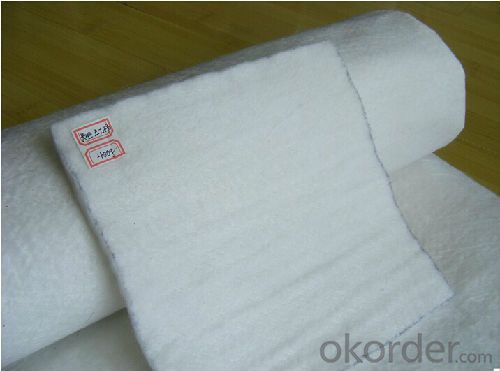
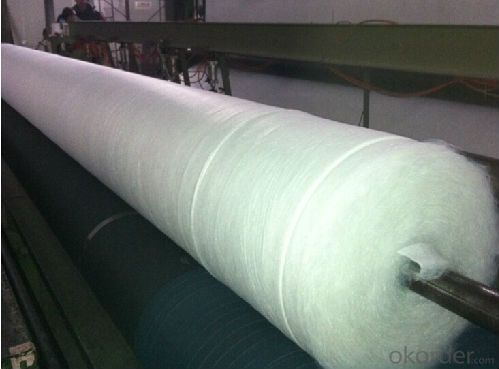
5.RFQ
1) What's your payment terms?
L/C at sight, T/T are accepted
2) What's your package?
Per roll with one woven bag or as your request
3) What's your delivery time?
One week after prepayment received
- Q: What are geotextiles?
- Geotextiles are synthetic fabrics made from polypropylene or polyester that are used in civil engineering and construction to improve soil stability, drainage, and erosion control. They are permeable and provide strength and reinforcement to various applications such as roadways, retaining walls, and landfills.
- Q: Can geotextiles be used in subsurface drainage applications?
- Yes, geotextiles can be used in subsurface drainage applications. They are often used as a filter or separator in drainage systems to prevent soil particles from clogging the drainage pipes or channels while allowing water to pass through. Geotextiles can enhance the effectiveness and longevity of subsurface drainage systems by preventing soil compaction and maintaining the flow of water.
- Q: What is the difference between polypropylene geotextile, polypropylene geotextile and polyester geotextile
- Material is not the same
- Q: How do geotextiles help with soil reinforcement in retaining wall applications?
- Geotextiles help with soil reinforcement in retaining wall applications by providing additional strength and stability to the soil. They are placed between the soil and the retaining wall to distribute the weight and pressure evenly, preventing excessive soil movement and potential wall failure. Geotextiles also allow water to drain freely, reducing hydrostatic pressure and preventing water accumulation behind the wall, which can weaken the soil and cause erosion. Overall, geotextiles play a crucial role in enhancing the durability and effectiveness of retaining walls by reinforcing the soil and improving drainage.
- Q: What are the key considerations for geotextile installation in cold climates?
- Some key considerations for geotextile installation in cold climates include selecting a geotextile material that is designed for cold weather conditions, ensuring proper site preparation and ground stabilization, protecting the geotextile from frost heave or ice damage, and taking into account the potential for snow accumulation and removal on the geotextile surface. Additionally, considering the impact of freeze-thaw cycles and designing proper drainage systems are crucial for successful geotextile installation in cold climates.
- Q: What are the key factors to consider when selecting a geotextile?
- The key factors to consider when selecting a geotextile are the intended application, the type and characteristics of the soil, the required strength and durability, and the desired drainage and filtration properties. Additionally, factors like installation methods, project budget, and environmental considerations should also be taken into account.
- Q: Supply Tianhe District staple geotextile and anti-geotextile what is the same
- Staple geotextile is made of polyester staple fiber by acupuncture, because it can play the role of anti-filtration, and thus staple geotextile can also be called anti-geotextile. Filter geotextile is based on the use of the name, so long as it is able to play the role of anti-filter geotextile called geotextile filter, geotextile, including geotextile geotextile, filament geotextile, the preparation of geotextile, Woven geotextile, non-woven geotextile, polypropylene geotextile. Tianhe District used staple geotextile and anti-filter geotextile is the same.
- Q: Are geotextiles commonly used in canal lining applications?
- Yes, geotextiles are commonly used in canal lining applications. Geotextiles provide excellent erosion control and filtration properties, making them an effective solution for preventing soil erosion and maintaining the integrity of canal linings.
- Q: What are the considerations for geotextile selection in riverbank stabilization?
- When selecting geotextiles for riverbank stabilization, several considerations should be taken into account. Firstly, the strength and durability of the geotextile are crucial factors. It should have sufficient tensile strength and resistance to degradation from UV radiation, chemicals, and biological agents. Additionally, the permeability of the geotextile plays a vital role in allowing water to pass through while preventing soil erosion. The geotextile should also be compatible with the soil type and vegetation in the area to ensure proper integration and long-term stability. Finally, the cost-effectiveness and ease of installation should be considered to ensure practicality and efficiency in the riverbank stabilization process.
- Q: Can geotextiles be used in the construction of stormwater ponds?
- Yes, geotextiles can be used in the construction of stormwater ponds. Geotextiles are commonly employed in stormwater management systems to enhance filtration, separation, and erosion control. They can be used as a lining material to prevent soil erosion and provide stability to the pond. Additionally, geotextiles can help with sediment control, maintaining water quality, and supporting vegetation growth in stormwater ponds.
1. Manufacturer Overview
| Location | 示范:Hebei, China |
| Year Established | 示范:1997 |
| Annual Output Value | 示范:Above US$50 Million |
| Main Markets | 30.00% South America; 20.00% North America; 15.00% Eastern Europe; 15.00% Southeast Asia; 10.00% South Asia; 5.00% Southern Europe; 5.00% Africa |
| Company Certifications | ISO 9001:2008 |
2. Manufacturer Certificates
| a) Certification Name | |
| Range | |
| Reference | |
| Validity Period |
3. Manufacturer Capability
| a) Trade Capacity | |
| Nearest Port | Tianjin;Qingdao;Shanghai |
| Export Percentage | |
| No.of Employees in Trade Department | 21-50 People |
| Language Spoken: | English;Chinese |
| b) Factory Information | |
| Factory Size: | Above 100,000 square meters |
| No. of Production Lines | Above 12 |
| Contract Manufacturing | OEM Service Offered;Design Service Offered |
| Product Price Range | High;Average |
Send your message to us
Manta Geotextil Para Techos - 100g-1000g Continuous Polyester Filament Spunbond Nonwoven Geotextile
- Loading Port:
- Qingdao
- Payment Terms:
- TT or LC
- Min Order Qty:
- 5000 m²
- Supply Capability:
- 300000 m²/month
OKorder Service Pledge
OKorder Financial Service
Similar products
Hot products
Hot Searches
Related keywords
